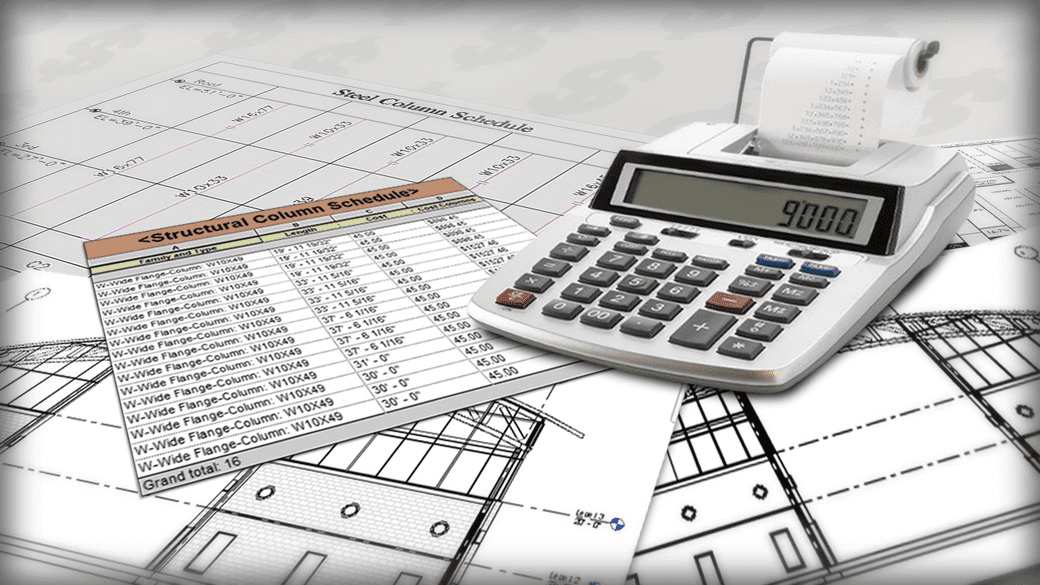Years back, my boss used to say “You will know whether your estimate is accurate or not, only after the project is finished”.
This is so true.
Estimating is not an exact science and by definition, the estimated number is only a predicted outcome.
Conceptual estimates start with the feasibility or order of magnitude estimate and then progress to schematic, design development and construction document stages.
The design development phase is dynamic and at every stage, the owner has to feel comfortable that the design is within the budget and if it varies has to be convinced by the design team why it varies. After the bids come in, the Construction Document (CD) stage estimate is compared with the qualifying bid or the average of the bids and if the variance is within an acceptable range, usually ranging between -10% to +10%, it is considered to be an accurate estimate.
The accuracy range is wider in the initial design stages and narrows down later as the scope becomes more definitive. So, it is essential for an owner’s estimator to produce a good estimate within the acceptable range. Owners look for realistic estimates to avoid re-bids, project cancellations and budget overruns.
At any stage, a good estimate depends upon several factors. This post highlights top 7 important factors to ponder upon:
1. Is your estimate issued with a well-written Basis of Estimate (BOE)?
 The estimator should ensure that an estimate always includes a Basis of Estimate (BOE). Some may think it is necessary only for bigger projects or only for Construction Document (CD) estimates. Irrespective of the size of the project or the stage of design, it is always good to prepare the BOE.
The estimator should ensure that an estimate always includes a Basis of Estimate (BOE). Some may think it is necessary only for bigger projects or only for Construction Document (CD) estimates. Irrespective of the size of the project or the stage of design, it is always good to prepare the BOE.
At any stage of the design, BOEs will describe the basis, assumptions, inclusions, exclusions and qualifications underlying the estimated dollars. The numbers become more meaningful with descriptions and BOEs can speak for the estimators when it becomes necessary to explain the estimate to the owner.
AACEI’s (Association for Advancement of Cost Engineering International) Total Cost Management (TCM) Framework describes BOE as “the one deliverable that defines the scope of the project, and ultimately becomes the basis for change management” [1].
Preparing BOE becomes even more critical for a Design build or a GMP (Guaranteed Maximum Price) contract. The reason is that these estimates may be prepared with a 75% or 90% design for fast tracking projects and it is necessary to confirm what the contract includes.
2. Does your firm have Estimating Procedures?
Establish standardized estimating procedures for the firm with detailed description of cost models, formats and modus operandi for handling contingencies, allowances and escalations at different design milestones.
3. Do you use a Good Database for Pricing?
It goes without saying that using a good database improves pricing accuracy. In addition to using published pricing resources such as RS Means, it is good to develop in-house database and update it periodically.
In addition, developing familiarity with online resources or subscribing to some related websites will help whether it is for knowing cost index from ENR.com or getting prevailing wages from the state website.
4. Does the estimate undergo Quality Assurance (QA)/ Quality Control (QC) checks?
 If the company already has a QA/QC policy, perform QA/QC checks before issuing the estimate. Develop list of items as a checklist, identify missing items and gaps and implement corrective measures.
If the company already has a QA/QC policy, perform QA/QC checks before issuing the estimate. Develop list of items as a checklist, identify missing items and gaps and implement corrective measures.
If the firm does not have one, it is better to develop a QA/QC policy for the firm to ensure accuracy and quality. Having a QA/QC policy will also demonstrate that the firm is committed to continuous improvement [2].
5. Are the quantities Accurate?
Here are some suggestions to check the accuracy of quantities:
- During initial design stages, use the right rule of thumbs, if required – For example, pounds per square foot of structural framing, pounds per cubic yard of concrete for rebar, sprinklers per hundred square foot, etc.
- You may use software and technology for take-offs but manual inputs and checks are a must when the design is evolving:
- OST (onscreen take-off) software can increase speed and accuracy but it is also important that you use the right one that meets your requirements and is user friendly. Many OST software programs offer overlay feature by which one can overlay a revised version of a drawing over the previous version and the resultant drawing will show the additions and deletions in different colors. When the design progresses from one stage to the next, use the overlay feature to quickly capture scope changes.
- BIM (Building Information Modelling) is increasingly used for many projects. When it comes to speed and accuracy of quantities, BIM surpasses OST. Conceptual models may not be complete for all disciplines but some software programs facilitate integration of BIM and 2D take-offs.
- In addition, a tech savvy estimator can also find some tablet or smart phone Apps that may be useful for increasing accuracy and speed of estimating – Make use of Apps for Photo measuring, ‘Plan Grid’ or other drawing Apps, ‘BIMx’ for model sharing, etc.
6. Are you communicating with your design group?
 Quality and clarity of design documents plays a big role for capturing the right scope. At the same time, it is also necessary for estimators to have constant communication with the design team – Architect, Engineer and other design consultants. Adopt all means to get the right
Quality and clarity of design documents plays a big role for capturing the right scope. At the same time, it is also necessary for estimators to have constant communication with the design team – Architect, Engineer and other design consultants. Adopt all means to get the right
information – RFIs (Request for Information), meetings, emails and phone calls.
Constant communication will help to clarify ambiguities or validate estimator’s assumptions.
7. Do you have a Good Estimating team?
Having a skilled team is very critical for producing a good estimate.
Find ways to improve productivity and organizing work within the estimating team. Inter disciplinary communications help to understand the scope better and to avoid disconnects and double dips.
Encourage training, certifications and membership in professional associations.
Compute estimate vs bid variances periodically to check if the team’s performance is meeting the metrics.
Review estimating approach and pricing, apply lessons learned from previous estimates and implement corrective measures.
In summary, I believe to develop a good cost estimate you need to:
- Prepare and issue a Basis of Estimate (BOE) document along with your detailed cost estimate
- Establish standardized estimating procedures for your corporation, if not done so already.
- Develop a comprehensive in-house database for pricing and update it periodically.
- Perform quality checks before issuing the cost estimates.
- Use available cost estimating software and technology to increase the accuracy of quantities.
- Maintain constant communication with the design team.
- Find ways to improve productivity and organizing work within the estimating team
What are your thoughts on developing great cost estimates with good level of accuracy? Please share your comments below and I will respond.
If you like this blog post, please hit the like button and share it with your circle of connections. Thank you.
References
- AACE International Recommended Practice No. 34R-05, ‘Basis of Estimate’ – TCM Framework:7.3 Cost Estimating and Budgeting
- Sundaram, R. ‘Cost Estimating – Performance Measures’, fgould.com, 03/17/2015
- Sundaram, R. ‘Onscreen Takeoffs: Making Efficient use of Digital Overlays in Estimating’, fgould.com, 03/10/2016
About the Author
 Ramani Sundaram CCP, CEP, MRICS, PMP
Ramani Sundaram CCP, CEP, MRICS, PMP
Ramani is an experienced Project Management and Cost Professional with specialization in Cost Management and Cost Estimating- Certified Cost Professional (CCP), Certified Estimating Professional (CEP), Project Management Professional (PMP) and Member of RICS (MRICS). He is currently working as a Lead Estimator with Faithful+Gould, Inc. He can be reached at: [email protected] or LinkedIn Profile


















